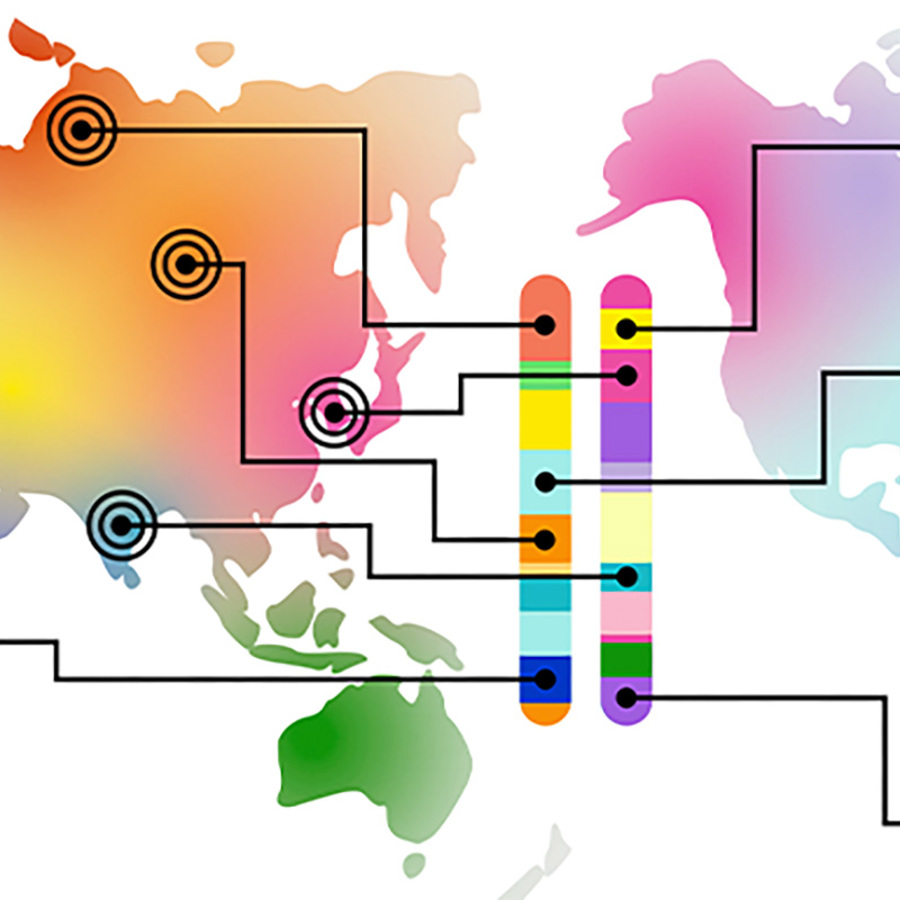
Why didn’t my ancestry results show Native American ancestors?

- Related Topics:
- Ancestry,
- Ancestry tests,
- Consumer genetic testing,
- Genetic genealogy,
- Common questions
A curious woman from California asks:
“How is it that I know that my great grandmother was married to a Native American, but when I had my ancestry checked, I showed no Native American ancestors?”
Consumer ancestry tests can be a fun way to learn more about your family history. But the results can be confusing, especially if they aren’t what you expected.
Here, we’ll talk about why Native American ancestry might not show up in your results — from genetic reasons, to test accuracy reasons, to cultural reasons.
*shuffles deck*
Each person gets 50% of their DNA from their mom and 50% of their DNA from their dad. So then each person gets 25% of their DNA from each grandparent, right? Right??
Not necessarily.
On average, this is true. But for each individual person and chromosome, the proportions can vary. Let’s look at one chromosome as an example.
Every person has two copies of each chromosome. When sperm and eggs are produced, the two copies first swip-swap at a few random places. This process is called recombination.
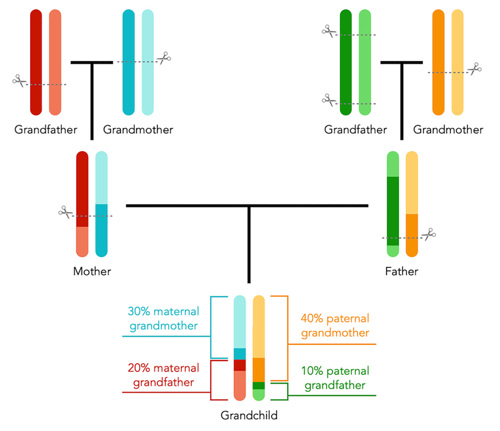
This process happens every generation, so a person has a mixture of DNA from all their grandparents. If you looked at all 23 pairs of chromosomes, you have about 25% DNA from each. But you can see that the actual percentages vary based on how the chromosomes happened to recombine.
Let’s go down one more generation.
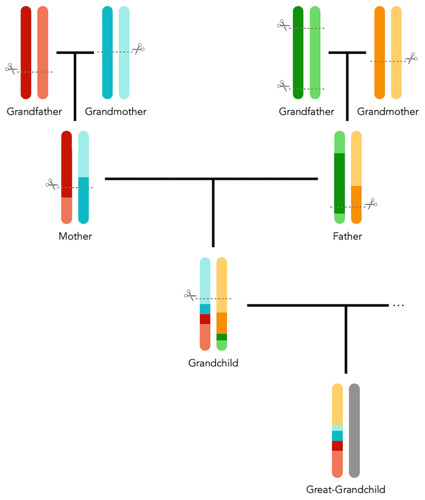
Based on the way the chromosomes recombined, this person no longer has any DNA from their great-grandfather (green)!
If green represents your Native American great-grandfather, this shows how you could inherit none of his DNA, just by chance. But is that likely?
Not really. It might happen for a single chromosome, like in the image above. But when you look across all 23 pairs of chromosomes, you’re essentially guaranteed to inherit DNA from your great-grandparent.
However, it becomes more likely the further back you go. It’s a lot easier to lose chunks when you look over many generations!
|
Ancestor |
Percent chance of no shared DNA |
|
Parent |
0% |
|
Grandparent |
0% |
|
Great-grandparent |
0% |
|
Great-great-grandparent |
~0% |
|
(Great x 3)-grandparent |
0.1% |
|
(Great x 4)-grandparent |
0.6% |
|
(Great x 5)-grandparent |
5% |
It’s extremely unlikely to inherit no DNA from a close-ish ancestor1,2.
Your great-grandfather could have been fully part of a Native American tribe without being “full” Native American. Perhaps your “full” Native American ancestor was one of your great-great- or great-great-great grandparents. And in that case, you really might not have inherited any DNA from them.
So that’s the strictly genetic reason why you might not have any Native American DNA. But let’s explore how true Native American ancestry might just not show up in an ancestry test.
Some variants are hard to place
Ancestry tests use statistical methods and algorithms to estimate your ancestry. Without going into the nitty-gritty, let’s see why they sometimes get it wrong.
Consumer testing companies look at about a million specific spots in your DNA. They then take groups of spots that are near each other, compare your results to people whose ancestry they already know, and then use statistics to predict your ancestry.
Imagine a genetic variant that is very unusual. Perhaps it is very common in East Africa but very rare elsewhere. If you have that variant, it’s easy to identify where it came from.
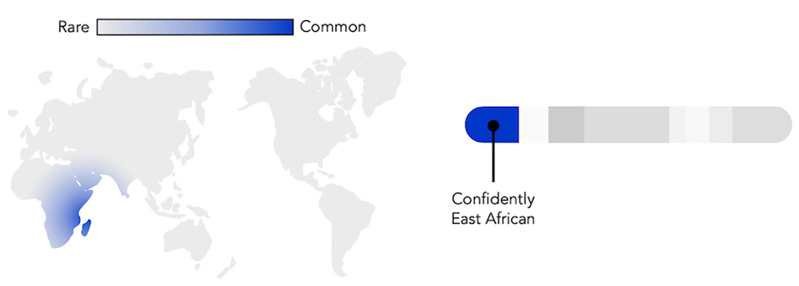
But what if the genetic variant is not unique? The algorithm would have low confidence in the result. It is hard to assign ancestry to DNA that is equally common in Europe, America, and Asia!
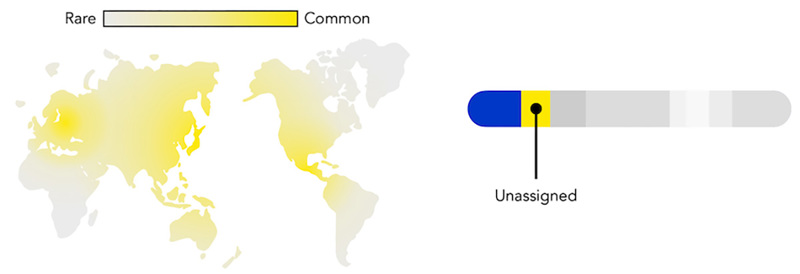
But when the algorithm encounters genetic variants like this, it doesn't necessarily give up. In the below example, the ancestry test has identified several blocks of North American and Southeast Asian ancestry. But the teal block could reflect ancestry from either region.
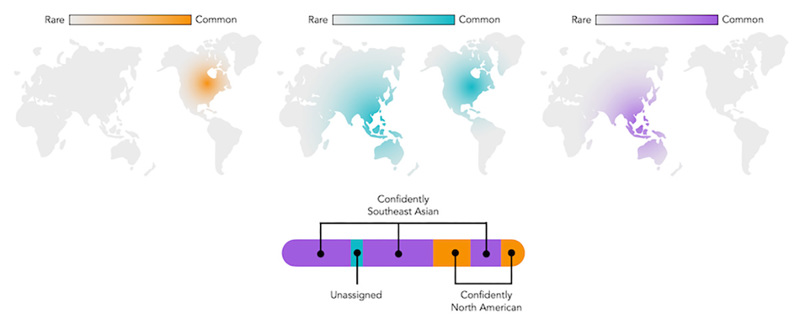
In this case, testing companies sometimes use context clues. The “unassigned” teal block is surrounded by DNA that shows Southeast Asian ancestry. Plus, those Southeast Asian blocks are large, but the unknown block is small. So the algorithm might assign the teal block “Southeast Asian ancestry”, too.
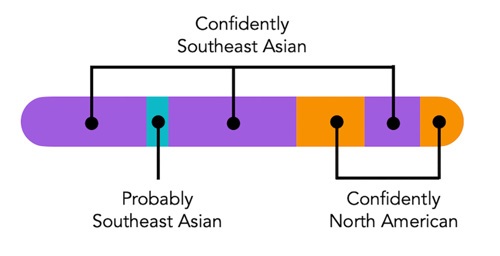
Okay, but this could happen with any block of DNA. So why is it specifically bad for Native American ancestry?
It has to do with the way we’ve studied genetics historically. The vast majority of studied genomes are European, so there are a lot of known Europe-specific genetic variants. There are much fewer known Americas-specific variants.
This is why genetic testing companies can easily give people very specific breakdowns of their European ancestry — even down to county-level — while other ancestry labels might be as broad as “East Asian.”
And we have shockingly little Native American data. Genetics research has historically been Eurocentric. And when Native American groups were included, it was often done badly and left communities skeptical of genetics research due to historical maltreatment. Not only that, but Native American groups have been forced to migrate and assimilate repeatedly over our country’s history, obscuring some of the usual genetic signatures of ancestry.
So it’s harder to distinguish truly-Native-American DNA from other populations. A true-Native-American section could be incorrectly assigned a different label (typically “Broadly East Asian”), or it could be reported as “unassigned.”
Ancestry estimates are getting better though! Recently, 23andMe has made it possible (in certain cases) to see which region of North America someone’s Native American ancestry comes from.
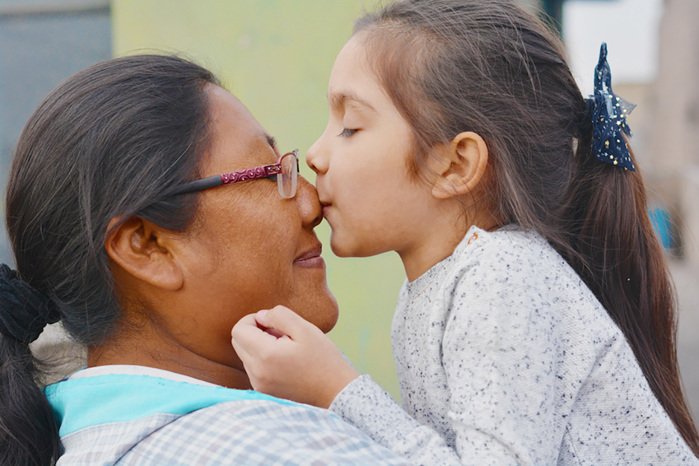
Family fables and fictions
A third possibility is that you simply don’t have a Native American ancestor. Claims of Native American ancestry (typically Cherokee) are fairly common, and have been passed down in families through generations3,4.
Ironically, people originally began claiming Native American ancestry in order to seem more white. Before Native Americans were forced away from their land by the US government in the 1820s-1830s, certain tribes had a rich history of trade, migration, and intermarriage with European settlers. By the 1850s, after most Native Americans had been forcibly removed from their land, it became trendy for white Southerners to claim Native American ancestry.
Though delusional, they used it to legitimize their long-lived Southern roots, establish American-ness, and reduce their family’s guilt of colonization5,6. After watching Native American tribes suffer at the hands of unjust government policy, white Southerners also drew parallels to their own struggle against an oppressive government. These unverifiable stories of Native ancestry were then passed down through families.
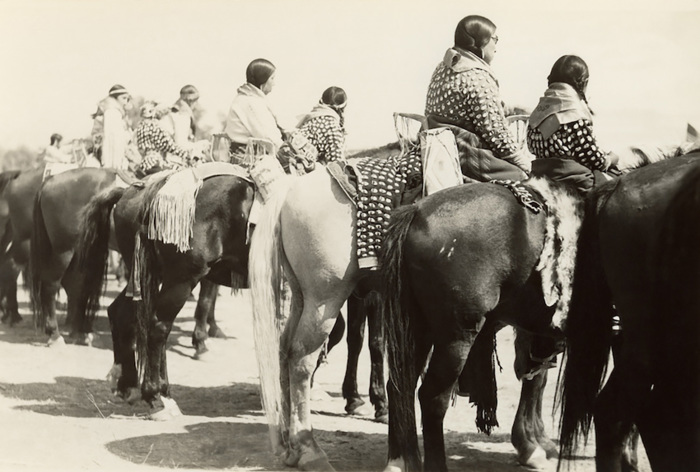
Other stories of Native American ancestry arose during the Jim Crow era. From the 1860s to 1960s, the US passed racist laws establishing segregation and discriminating against Black people. To get around these laws, some Americans explained away their darker skin by claiming they were white with Native American ancestry7. If you take an ancestry test and are surprised to see you lack Native ancestry but do have African ancestry, this could be the reason why.
If your family has always claimed a Native American ancestor, you’re not alone. Sometimes these stories are true — Native people did interact and intermarry with Europeans to some extent. But in other cases the story turns out to be a myth, entirely made up by a more recent ancestor.
Conclusion
This question and situation is a common one. Tons of people are shocked to find out their DNA tells a different story from what they’ve always known.
Native American ancestry might not have been inherited because of the random way DNA is passed down. Or the ancestry test might have missed it. Or perhaps your family was just wrong about having a Native ancestor.
Read More:
- Ask-a-Geneticist: What are the odds of inheriting no DNA from a great, great, great grandparent?
- Slate: Why Do So Many Americans Think They Have Cherokee Blood?
- History.com: Why the Navajo Nation Banned Genetic Research
- AncestryDNA: More about genetic testing and Indigenous American DNA
- 23andMe: A new analysis sheds light on some customers’ Indigenous genetic ancestry from North America
- Code Switch podcast: How "Pretendians" hurt real Indigenous people and communities
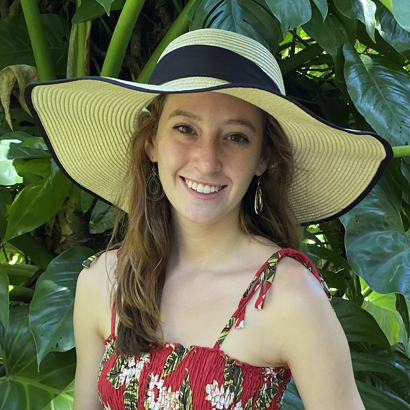
Author: Alyssa Lyn Fortier
When this answer was published in 2022, Alyssa Lyn was a Ph.D. candidate in the Department of Biology, studying the evolution of immunity-related genes in Jonathan Pritchard’s laboratory. She wrote this answer while participating in the Stanford at The Tech program.
 Skip Navigation
Skip Navigation
